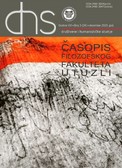O PREVOĐENJU NEKIH KULTURNO SPECIFIČNIH ELEMENATA ORIJENTALNOG PORIJEKLA U ITALIJANSKIM PREVODIMA ANDRIĆEVOG ROMANA NA DRINI ĆUPRIJA
ON TRANSLATING SOME CULTURE-SPECIFIC ELEMENTS OF ORIENTAL ORIGIN IN ITALIAN TRANSLATIONS OF THE NOVEL NA DRINI ĆUPRIJA BY IVO ANDRIĆ
Author(s): Nerma KerlaSubject(s): Lexis, Comparative Linguistics, Bosnian Literature, Translation Studies, Theory of Literature
Published by: Filozofski fakultet Univerziteta u Tuzli
Keywords: translation; Bosnian; Italian; translator; realia; Orientalisms;
Summary/Abstract: Na Drini ćuprija (The Bridge on the Drina) is one of the most recognized and most popular novels by Nobel laureate Ivo Andrić. It has been translated into Italian twice – by Bruno Meriggi (Il ponte sulla Drina) in 1960 and by Dunja Badnjević in 2001. This novel is deeply rooted in the cultural and social context of the early 16th to early 20th century Bosnia and Herzegovina. Since the novel describes historical events and figures who marked four centuries in Višegrad and its surroundings (from the bridge construction in 1516 until its partial destruction in 1914), first under the Ottoman, and then under the Austro-Hungarian rule, it is only natural that many words of Oriental origin are a frequent occurrence in the novel. These words permeated the language of the locals at the time, but also trade, economy, and state affairs, and therefore Andrić decided to incorporate them in his writing - to paint an authentic picture of life in Bosnia and Herzegovina during that time. The focus of this paper is to excerpt the cultural realia of Oriental origin that denote state, social, and religious titles and occupations in the novel. The next step is to analyze these instances contrastively and examine their frequency in the original as well as their frequency in both Italian translations. It has been concluded that, since there is a significant spatial and cultural distance present, the identified realia do not exist in the Italian language repertoire and therefore they pose a problem for translators. Additionally, they are often seen as archaisms, historicisms, and regionalisms even in the contemporary Bosnian language because they have been suppressed from the lexical inventory due to different cultural and social changes that occurred over time.
Journal: DHS-Društvene i humanističke studije: časopis Filozofskog fakulteta u Tuzli
- Issue Year: XXIV/2023
- Issue No: 24
- Page Range: 173-192
- Page Count: 20
- Language: Bosnian

